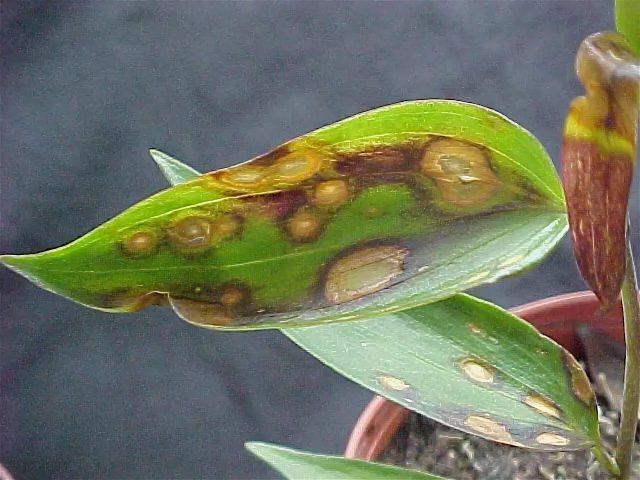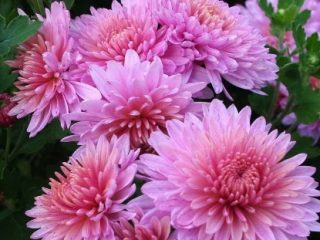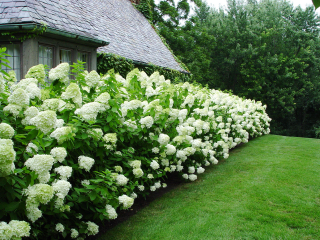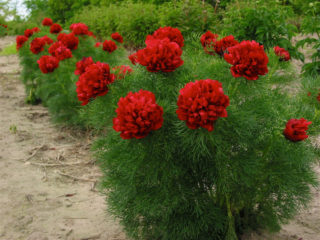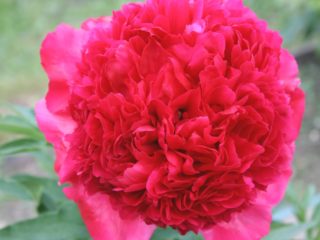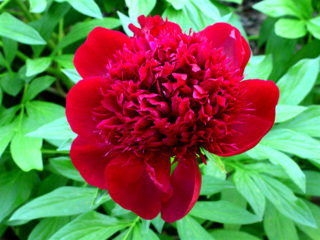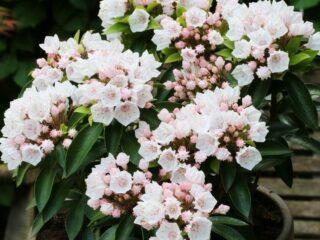Content
Relatively recently, LO hybrids of lilies, which appeared on sale, quickly gained popularity among gardeners around the world. They are distinguished by the large size of their flowers and the bright color of their petals, combined with their relative unpretentiousness and ease of care. Lily Triumphant meets all these criteria, therefore, despite some disadvantages, it is consistently “in demand” by gardeners.
History of appearance
Lily Triumphant is one of a series of LO hybrids obtained by crossing breeders of varieties from the long-flowered and oriental categories. They were bred in Asia and appeared on the public market about ten years ago. The name of the series is easily explained by the Latin name of the groups of varieties that participated in the selection - Longiflorum and Oriental.
Description of the Triumphant lily
Lily Triumphant is a plant 90-100 cm high (in particularly favorable conditions the stems can stretch up to 1.5 m). In landscape design it is used for planting not only in open ground, but also in containers and flowerpots. It is suitable for decorating borders, edging garden paths, decorating rock gardens and rockeries.
The stems of the plants are strong and erect.The hybrid forms green mass very actively; it can be called densely leafy. The leaf blades are rich green in color, have a typical shape for the crop, and are quite large.
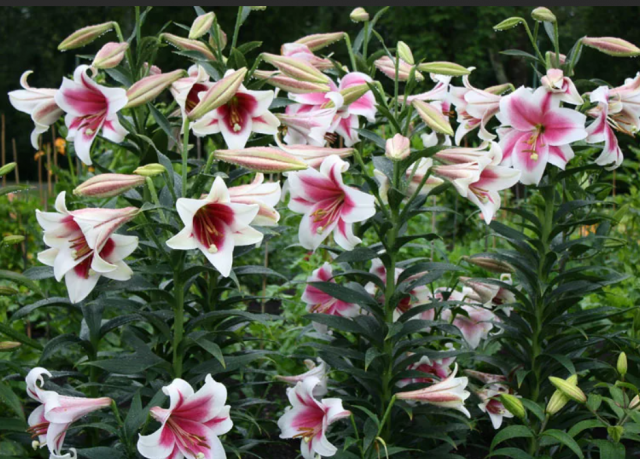
The stems do not bend even under the weight of large flowers, after strong gusts of wind and downpours
The number of buds on a peduncle reaches 12-15 pieces. They are oriented in one direction in relation to the stem, but do not interfere with each other. When fully opened, the flowers reach 20-25 cm in diameter. They are simple in type, not terry; their shape varies from tubular to funnel-shaped, a bit like a bell.
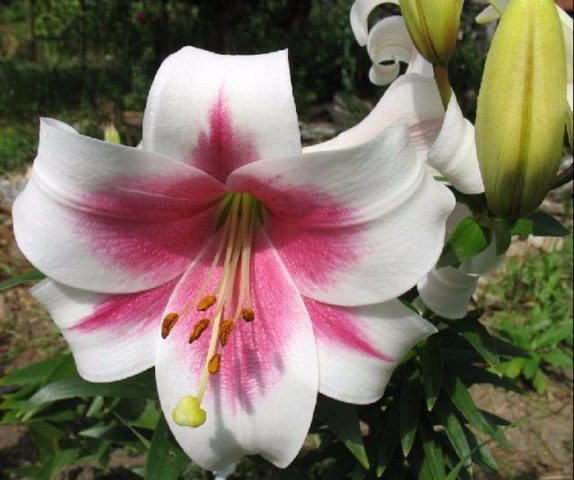
The petals of the Triumphant lily open wide, bending slightly back
The color of the petals is a bright core against a general snow-white background, without specks or borders. Its shade depends on cultivation conditions, quality of care, substrate composition and other nuances. Most often the core is crimson-pink or raspberry, but it can also be lilac-lilac. The brightness of the color does not suffer from direct sunlight, but when there is a lack of light, the core noticeably fades.
In addition to the "main" hybrid, there is also a lily called White Triumphant. From its photo and description it is easy to understand that it differs from the “original” only in the monochromatic snow-white color of the petals.
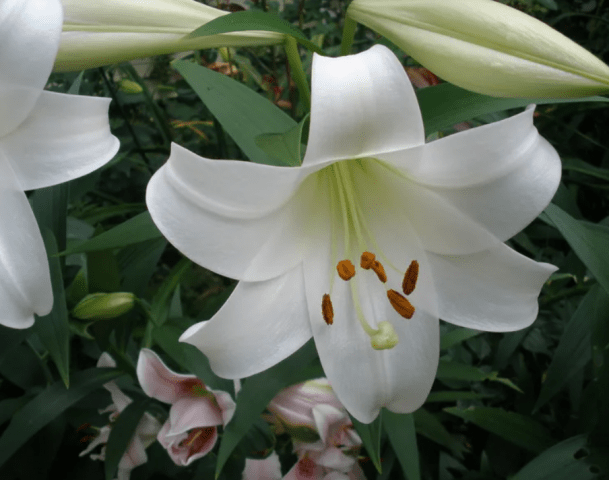
Lilia White Triumphant is no less spectacular than the “original”
Features of flowering
The flowering time of the Triumphant lily is average.It begins in mid-July and lasts 3-4 weeks. The specific time of flowering and its duration depend on how favorable the weather was and the quality of plant care.
Winter hardiness of Lily Triumphant
In terms of cold resistance, the Triumphant lily, according to the international classification, belongs to USDA zone 5. This means that, provided that it is properly covered for the winter, it will survive prolonged frosts with temperatures ranging from -23-29 °C.
Advantages and disadvantages
Lily Triumphant is suitable not only for decorating a site, but also for cutting. In a vase, flowers remain presentable for up to 12-15 days, depending on the stage of bud opening.
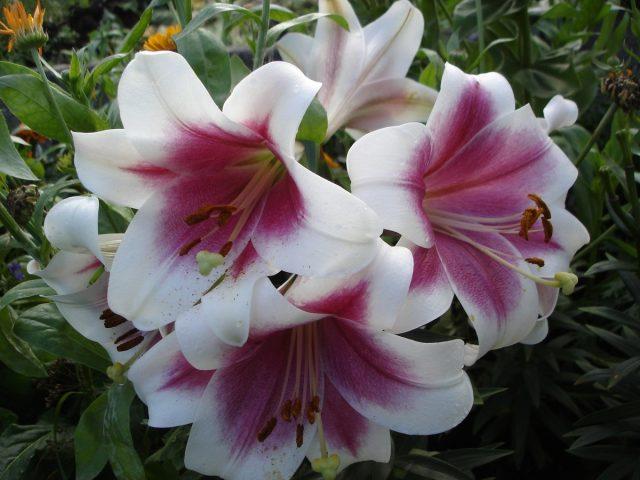
The aroma of Triumphant lilies intensifies slightly in the evening; it can be detected at a distance of 8-10 m from the flower
Pros:
- wide possibilities of use in landscape design;
- Suitability of flowers for cutting, long-term preservation after it;
- large size of flowers;
- abundant and fairly long flowering;
- bright and catchy, but at the same time “classic” coloring of the petals;
- clearly distinguishable, but at the same time quite light, unobtrusive aroma;
- powerful stems that do not need garter, can withstand the weight of buds, sharp gusts of wind, heavy rains;
- good immunity against fungal diseases typical for the culture;
- relatively easy care;
- ability to tolerate direct sunlight, shade tolerance.
Minuses:
- “large-sized” powerful plant;
- demands on the fertility of the substrate;
- very negative reaction to constant cold drafts.
Planting the Triumphant lily
There are few requirements for the landing site of the Triumphant lily.Only areas with groundwater close (a meter or less) to the soil surface, as well as those characterized by constant sharp drafts, are excluded. The substrate is preferably slightly acidic or neutral, fertile. If its quality does not meet the requirements of the plant, organic and mineral fertilizers and “deoxidizers” are added to the soil when preparing the flower bed.
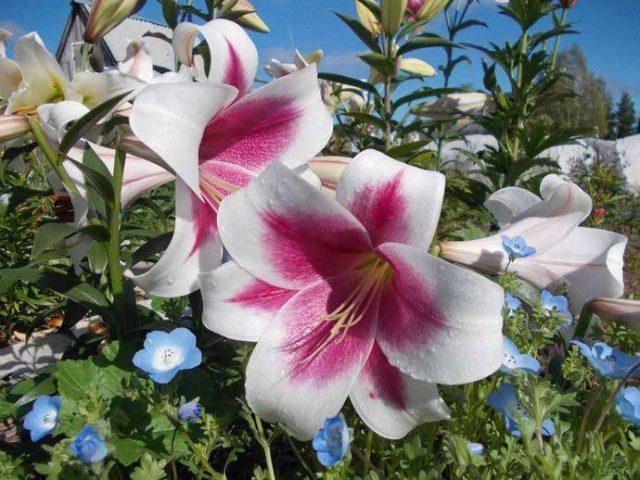
With a lack of light, the Triumphant lily noticeably loses its decorative effect
It is advisable to purchase bulbs immediately before planting. They can be planted both in spring (April-May) and autumn (September-October). Dry scales are removed from them, dead roots are cut off. To disinfect, they are pickled in a solution of any fungicide for 10-15 minutes. If the quality of the planting material is in doubt, you can also soak the bulbs in a biostimulant solution.
Lily Triumphant is planted at a depth of about three times the height of the bulb. The minimum interval between plants is 50 cm.

It is advisable to throw a handful of coarse sand at the bottom of the hole (drainage)
Caring for the Triumphant lily
Agrotechnical measures for the Triumphant lily require only standard ones:
- Watering. On average, weekly watering is enough; in hot weather, the soil in the flowerbed is moistened twice as often. Water is poured exclusively at the root so that drops do not fall on the leaves, buds, and flowers.
- Feeding. 7-10 days after the leaves appear, it is recommended to water the Triumphant lily with a solution of any mineral nitrogen fertilizer. Then, during the season, every 2-2.5 weeks, use special products for lilies or universal preparations for flowering garden perennials.
- Preparing for winter.When the stems of the Triumphant lily are completely dry, they are cut off, leaving “stumps” 15-18 cm high. The roots are insulated by covering the flowerbed with a layer of mulch about 10 cm thick. If the winter is expected to be particularly harsh and with little snow, you can cover it with 2-3 layers of covering material.
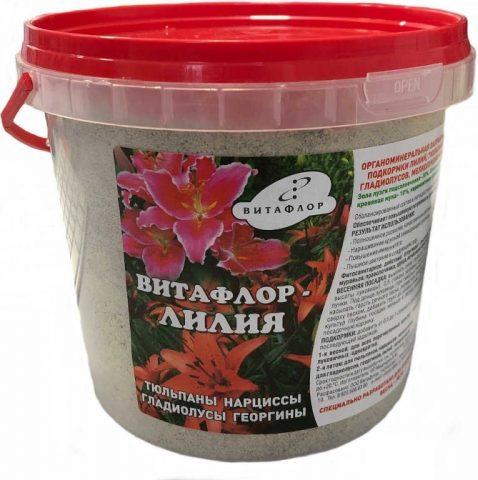
Abundant flowering greatly depletes the bulbs of the Triumphant lily, so they need regular “feeding”
Reproduction
The simplest method of propagating the Triumphant lily, provided by nature itself, is to transplant daughter bulbs. The “main” one needs to be dug out of the ground every 4-5 years, during which time “children” are formed in abundance. Most of them are quite well developed and successfully take root in a new place.
The daughter bulbs of the Triumphant lily are removed from the soil along with the “main” one in September-October at a daytime temperature of 8-10 °C (about a month before the first frost). You need to wait until flowering ends and the green mass dries completely.
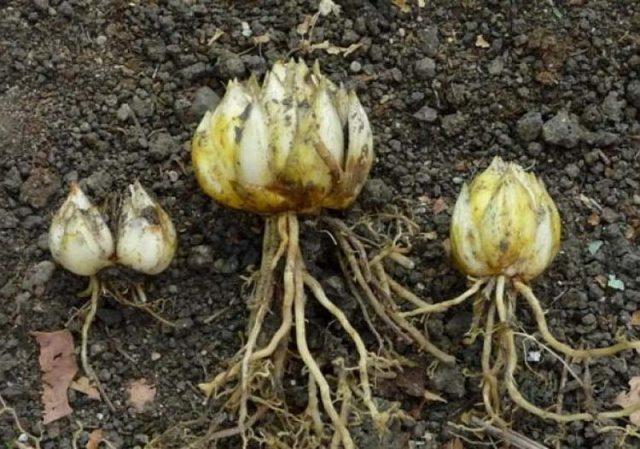
In order not to damage the “babies”, you need to carefully pry up a fairly large lump of soil with a pitchfork, and then “sort out” it manually or sift it
Pre-planting preparation for new and old Triumphant lily bulbs is no different. After this, the “babies” are immediately transferred to the chosen place, providing them with high-quality shelter for the winter.
There are also less “traditional” methods of propagating the Triumphant lily:
- Rooting leaves. They are cut as close as possible to the base of the stem at the time of budding. The cut is sprinkled with any powdered root formation stimulator and the leaves are “planted” at an angle of about 45° in well-moistened perlite, vermiculite, sand, or peat chips.The container is turned into a “greenhouse”, providing 10-12 hours of daylight, and preventing the substrate from drying out. If everything is done correctly, new Triumphant lily bulbs will form in about 1.5 months.
- Rooting parts of the stem. They can be cut both in spring and at the end of summer (2-3 weeks after the end of flowering of the Triumphant lily). “Cuttings” 10-15 cm long are simply “planted” in open ground or in a greenhouse or greenhouse. You can provide them with the same conditions as rooting leaves. If it is necessary to obtain the largest possible number of new specimens, the part of the stem located in the soil is cut lengthwise into 2-4 parts. For “established” planting material, it takes 40-45 days to form bulbs.
- Scales. If most of the bulb has suffered, for example, from a fungal disease, but the bottom has been preserved, it is thoroughly cleaned, cutting off all affected tissue. The bottom of the Triumphant lily, along with the preserved scales, is planted in the ground at any time during the growing season. The substrate is constantly maintained in a moderately moist state. After 15-20 days, shoots appear, and after about another month, bulbs form.
Pests and diseases
Lilies quite often “catch” fungal diseases, but LO hybrids have better immunity compared to most “relatives”. This also applies to the Triumphant variety: as a rule, a competent choice of planting site and high-quality care are enough to protect the plantings from diseases.
However, plants “abandoned” by the gardener may suffer from:
- Gray rot.Its development is indicated by “wetting” brownish or gray spots on the aboveground part of the Triumphant lily. Gradually they grow, the pathogen attacks the roots, and the flower dies.
The development of gray rot on the Triumphant lily is favored by increased soil and air humidity and sudden temperature changes.
- Rust. On the underside of the leaves of the Triumphant lily, spots of a “hairy” saffron-orange coating appear. Gradually it darkens and thickens, and holes form in their place.
Often, the rust fungus overwintering in the soil first attacks the bulb of the Triumphant lily.
To get rid of fungal diseases, the Triumphant lily and the soil in the flowerbed are treated with a fungicide solution. You must first cut off all tissue affected by the pathogen, even if the symptoms appear only slightly. The concentration of the working solution, the number and frequency of treatments, and other important nuances of the procedure are determined in the instructions for the drug.
Of the pests, the Triumphant lily is most often attacked by aphids. Small insects of different shades settle on the plant in whole colonies, preferring the youngest and most tender parts.
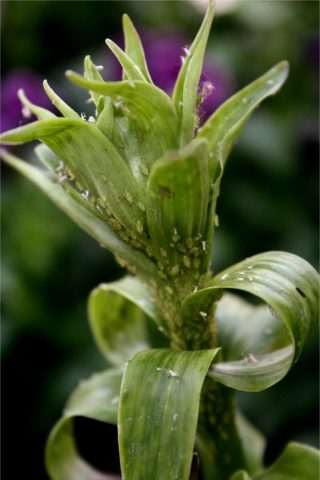
Aphids feed on plant sap: first, the tissues become covered with multiple small “punctures”, then they dry out and die
To combat aphids on the Triumphant lily, most universal broad-spectrum insecticides are suitable. First, the plant, if there are no flowers or buds, can be doused with water, “knocking” the pests to the ground.
Conclusion
Lily Triumphant in a flowerbed immediately attracts attention with the large size and bright color of the flowers. The hybrid is not particularly capricious and difficult to care for, so it is quite a suitable option even for not particularly experienced gardeners.Of course, it is not without certain disadvantages, which are worth knowing about in advance, but the advantages undoubtedly “cover” them.
